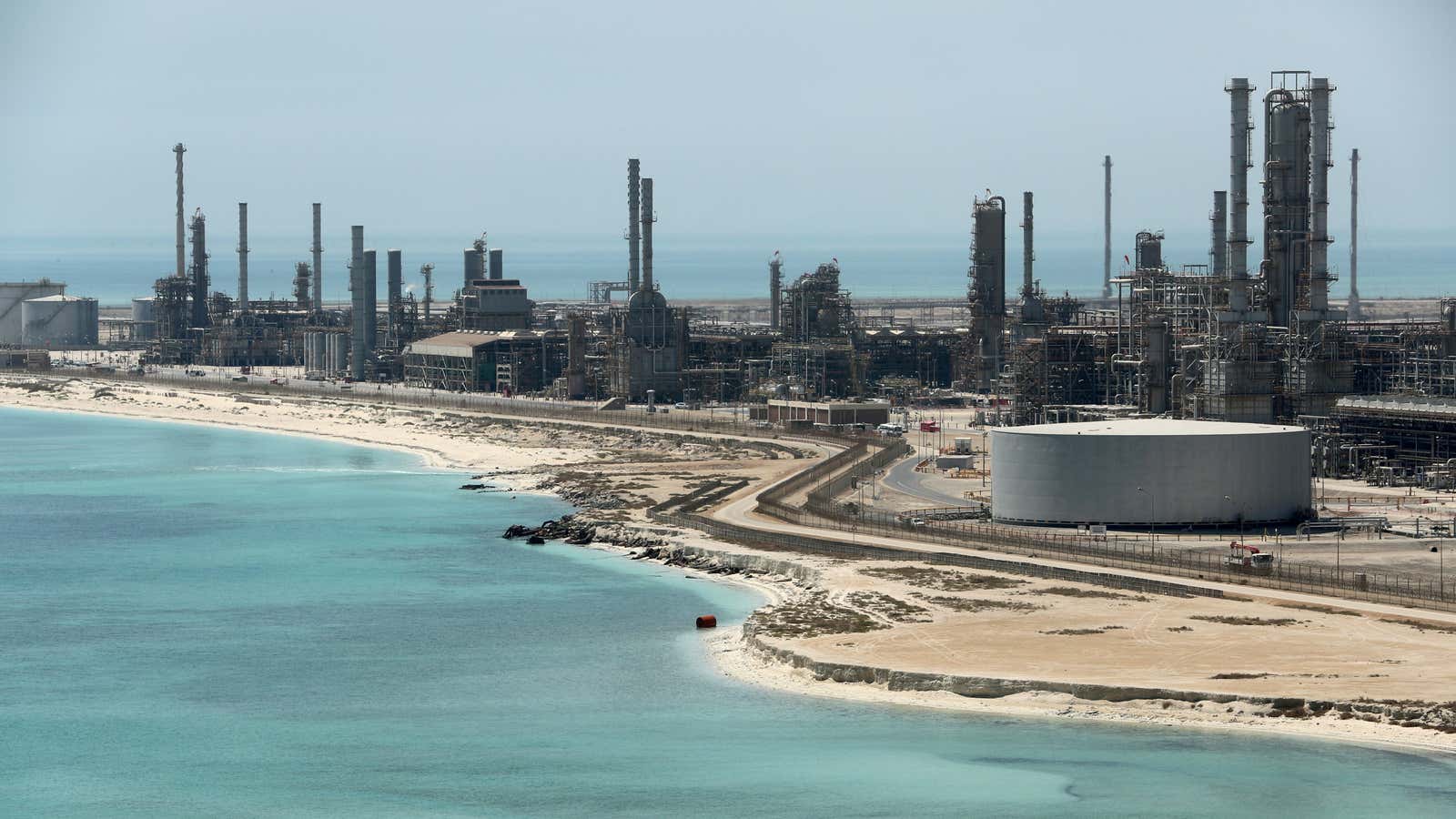Losing its status as the world’s most profitable company because of the pandemic in 2020 was a blip for oil and gas giant Aramco. The following year, demand rebounded. And as the world opened up, energy prices ballooned.
Saudi Arabia’s state-owned Aramco minted money: In 2021, its net profit more than doubled to $110 billion, the company said (pdf) on Sunday (Mar. 20). Now, the company is upping energy investments. It’s targeting capital expenditure of between $40 billion and $50 billion this year, compared with under $32 billion in 2021.
“Our investment plan aims to tap into rising long-term demand for reliable, affordable, and ever more secure and sustainable energy,” CEO Amin Nasser said.
Aramco is increasing oil and gas output
Aramco said it will raise its crude oil “maximum sustainable capacity” to 13 million barrels a day by 2027, up from 10 million in February.
In the context of the Russian invasion of Ukraine, and the consequent energy supply issues, Western countries will likely cheer this decision. Earlier in March, UK prime minister Boris Johnson visited Saudi Arabia to persuade the country to pump more oil into world markets. US president Joe Biden was reportedly considering making the same plea, despite souring relations between the two countries.
By 2030, the company is also aiming to increase gas production by more than 50%.
The roadblocks in Aramco’s way
Climate change activists argue the increase in output will worsen global warming, a complaint the company says it is addressing.
Beyond oil and gas, “Aramco also intends to develop a significant hydrogen export capability and become a global leader in Carbon Capture and Storage (CCS),” the company said. Hydrogen, which emits no harmful greenhouse gases when burned, is sometimes converted into ammonia for ease of transport. Aramco already sent its first shipment of blue ammonia in September to Japan to show it could be viable. But it’ll still take several years before hydrogen becomes a fully fledged business.
Separately, unrest in the region is another threat that could derail plans. The most recent announcement came as Yemen’s Houthi rebels—against whom Saudi Arabia leads a military coalition—launched cross-border armed drone attacks that hit, among other facilities, Aramco’s plant in Jeddah. The temporary drop in output caused prices to spike. In 2019, similar attacks had hit global crude oil supplies hard.
